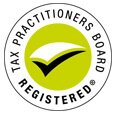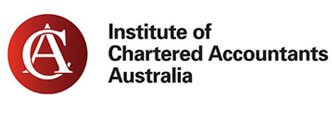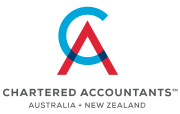
Seven changes impacting your super in 2025
Superannuation rules are always changing, and 2025 is set to bring some updates that could affect your retirement savings.
Whether you’re just starting to build your super or already planning for retirement, keeping up with these changes can help you make informed decisions. Here’s what’s on the horizon.
1. Possible tax changes for large superannuation balances
The government is looking at increasing taxes on large super balances. The proposal would add an extra 15% tax on the earnings of super balances over $3 million, starting from 1 July 2025. This has been a hot topic, with debates about whether the tax system for super is fair. The proposal made it through the House of Representatives in 2023 but ran into problems in the Senate in late 2024. To pass, the government needs support from minor parties and independent senators, but many are pushing back against key parts of the plan, such as taxing unrealised gains (profits on investments that haven’t been sold) and not adjusting the $3 million threshold over time.
With a federal election coming up, it’s unclear if this tax change will go ahead. If it doesn’t pass soon, it may be delayed or scrapped altogether. The Senate will revisit the issue in February 2025, so we’ll have to wait and see what happens next.
2. Increase in employer superannuation guarantee contributions
A key change in 2025 is the rise in the super guarantee (SG), which is the portion of your wage that your employer must contribute to your super fund. From 1 July 2025, the SG rate will increase from 11.5% to 12%. While this might seem like a small increase, it can make a significant difference over time, helping your retirement savings grow. If you’re an employee, this means more money going into your super, but it’s also worth checking if it affects your overall salary package.
3. Potential increase to transfer balance cap
Although contribution caps increased in July 2024 due to inflation adjustments, they are not expected to rise again in July 2025. However, the transfer balance cap (TBC) – which limits how much super can be moved into a retirement pension – will increase from $1.9 million to $2 million on 1 July 2025. This change mainly affects people who haven’t yet started drawing a retirement income from their super. If you already receive a pension from your super, you might still benefit from a partial increase, depending on your individual circumstances.
4. Impact on total superannuation balance
As the TBC rises on 1 July 2025, the total super balance (TSB) limit will increase as well. This limit affects how much you can contribute to your super using after-tax dollars, known as non-concessional contributions (NCCs). The expected increase in TSB thresholds will determine how much extra you can contribute, including whether you can use the bring-forward rule, which allows you to make larger contributions over a shorter period. The table below shows a breakdown of the expected limits for 2025.
As can be seen, if your TSB is below $1.76 million, you can contribute up to $360,000 over three years. However, as your TSB increases beyond this amount, the limit on how much you can contribute gradually reduces. Once your TSB reaches $2 million or more, you will no longer be able to make additional NCCs.
These changes may create opportunities for some individuals to grow their super, but it’s important to understand how the new limits apply to your personal situation.

5. New rules for older legacy pensions
In December 2024, the government introduced new rules to give people more flexibility in managing older “legacy pensions.”
For years, some retirees with lifetime, life expectancy, and market-linked pensions in self-managed super funds (SMSFs) have faced strict rules that made it difficult to change or adjust these pensions. These products can no longer be started in SMSFs, and many people have been stuck in outdated pensions that no longer suit their needs.
Previously, the only way to change these pensions was to convert them into similar products, which came with limits on how reserves could be allocated that did not count towards the member’s contribution caps. But with the new rules now in place, people with legacy pensions have five years to review their options and make changes if needed. Since these decisions can be complex, it’s a good idea to speak with a financial adviser, especially one who specialises in SMSFs, before making any changes.
6. Improved super fund performance and transparency
Large APRA-regulated super funds are under pressure to deliver better performance and be more transparent with their members. In 2025, expect to see:
■ Continued focus on underperforming funds: funds that don’t deliver strong returns may face more scrutiny or even be forced to merge.
■ Better reporting on fees and investment performance: members should receive clearer information about where their money is invested and what fees they’re paying.
Comparing super funds has become easier, helping you make more informed decisions about where to keep your retirement savings.
7. Technology and digital innovation and super
Technology is playing a bigger role in superannuation, and 2025 will likely see more innovation. Super funds are investing in better online tools, mobile apps, and artificial intelligence to help members track their savings and make smarter investment choices. If you haven’t already, it’s worth exploring your super fund’s digital tools to take control of your retirement planning.
Final thoughts
Superannuation is a long-term investment, and small changes can have a big impact over time.
With the start of a new year, take the time to review your super, stay informed about potential changes, and consider speaking to a financial adviser if needed. With the right strategies, you can make sure your super is working hard for your future retirement.
Yet more rental data matching by the ATO
Feeding its seemingly insatiable appetite for rental data, the ATO has recently announced it will soon be collecting rental bond details for some 2.2 million individuals.
The data, which will be collected twice a year from State and Territory bond regulators, is very comprehensive, and will include personal details such as names, addresses, dates of birth, telephone numbers, email addresses and bank account details for rental providers and tenants. The data obtained will also include business-related information for managing agents. Also included will be the address of the leased property, the term of the lease, lease commencement and end dates, bond amounts, rent payable and payment intervals.
The ATO will also be seeking information about the characteristics of the leased property, including the type of dwelling, the number of bedrooms and a unique identifier for the rented property.
This latest quest for rental data comes after the ATO also acquired property management data records for 2.3 million rental providers from software companies last year.
The project is aimed at identifying those who may not have properly disclosed their rental income, or accounted for capital gains tax (CGT) due on the disposal of their rental property. Clearly, the ATO believes there is still significant under-reporting in this area and that the level of compliance needs to be improved. How much under-reporting of rental income there is remains to be seen.
Where people are letting their properties outside of the rental bond framework by using short stay platforms such as Airbnb, the ATO already knows about those arrangements, having obtained the information from the platform providers.
Rental income from short-term stays or even renting out a bedroom in your home has to be disclosed as assessable income in the same way as rental income from the long-term lease of a house or an apartment, although there can be some tricky issues around the apportionment of expenses when claiming deductions. Many taxpayers with investment properties can expect to be subject to some sort of ATO attention in the coming years and it may be worth double checking that the way these transactions have been disclosed in your tax returns is 100% correct. If not, the best way to set things right would be by making a voluntary disclosure to the ATO before they start asking questions.
Issues that could be raised on audit include:
■ The repairs vs improvement issue
There can be a fine line between work carried out that is a genuine repair (and tax deductible up front) and an improvement (generally deductible over time). Even where something is a genuine repair, it may not be deductible if the work is carried out immediately after acquiring the property and before any tenants are put in.
■ Bond retentions
Where part of the bond is retained at the end of a tenancy because of damage caused by the tenants, the amount retained needs to be disclosed as assessable income. The cost of any associated repairs would generally be deductible.
■ Interest deductibility
Where you have a mortgage over an investment property and the loan was used to acquire the property (or any other income producing asset), interest will be deductible, provided the property is being let or is available to let. But where you already own an investment property free and clear and borrow against it to pay off the mortgage on your main residence or use the money to buy a car or fund a holiday, the interest is non-deductible. It’s the use of the borrowed funds that determines interest deductibility.
■ Is that holiday house genuinely available for rent?
Unless your beach house is exclusively used for rental purposes, and is never used by family members or friends free of charge or below market value, there are always issues around the apportionment of expenses. Advertising the property at an unrealistic price is not regarded as making it genuinely available for rent, which will affect apportionment.
■ Inherited property
There is a myriad of CGT issues around the sale of an inherited property, including where it has been used for rental purposes.
We’re happy to help
Coalition election announcements
The unofficial federal election campaign is now well under way, with Opposition Leader Peter Dutton announcing a couple of tax policies while out on the hustings in Queensland on 19 January.
We’re drawing these developments to your attention in order to keep you informed about what the tax landscape might look like post-election after announcements from the major parties. We appreciate that people make their voting decisions for all sorts of reasons, and small business tax policy is unlikely to affect the election result in one way or another. And we would never suggest how you should direct your votes – that’s none of our business.
Entertainment expenses –return of the boozy lunch?
In an effort to boost the hospitality sector, the Coalition promises full deductibility and no FBT for up to $20,000 a year spent on the cost of food and entertainment at clubs, pubs and restaurants, but not for the cost of alcohol. Intriguingly, the announcement states that the new policy will run for an initial two-year period, perhaps suggesting that the Coalition may be open to extending it beyond two years.
The proposal will apply to businesses with an annual turnover of up to $10 million. The policy has not been costed, at least not publicly – that will presumably come later in the campaign.
So, what’s being proposed is not a switching off of the non-deductible entertainment rules across the board. Football, tennis and theatre tickets and the like will remain non-deductible and/or subject to FBT where employees are involved. This is a carve-out for meals and associated entertainment only.
The alcohol exclusion is a win for sobriety, but in any case, workplace practices have changed since the 1980s and 1990s, with many workplaces having testing protocols with a zero tolerance for drugs and alcohol. Some older readers may look back nostalgically to the lunchtime exploits of yesteryear, but for the most part societal attitudes have moved on.
Whether this policy would be the shot in the arm the Coalition is hoping for remains to be seen. When the entertainment regime was first announced in 1985, many were predicting the swift demise of the hospitality industry, only to be proven wrong as business adjusted pretty quickly to the new rules.
And there were still plenty of long lunches in the late 80s and 90s. The reverse is entirely possible – that the slight loosening up of the rules will not do very much to change business behaviour.
But every little bit helps, and it is likely this two-year boost in deductibility for meals and entertainment will be welcomed by small businesses.
Instant asset write-off (IAWO) threshold
Another point of differentiation is the IAWO threshold, which is the amount below which small businesses (annual turnover up to $10 million) can take an immediate tax write-off for the cost of acquiring a depreciating asset. The Coalition is proposing to set the threshold at $30,000 and importantly, to make it a permanent feature of the tax law. As things currently stand, the existing $20,000 has to be legislated on a year by year basis, otherwise the threshold reverts to $1,000.
The legislation establishing the $20,000 threshold for the 2023-24 income year was only passed days before 30 June 2024, which may have dampened its incentive effect.
The announcement does not include a start date for the $30,000 regime. If the Coalition were to be elected this year and legislation was introduced speedily, it could apply to assets acquired in the 2024-25 income year, although commencement seems more likely to slip one year to the 2025-26 year.
On any objective basis, $30,000 is better than $20,000. Let’s hope this announcement sets off a small business tax bidding war.
Super and hardship: A safety net in financial difficulty
Superannuation is often seen as untouchable savings for retirement, but did you know it can also be a lifeline during financial difficulty? While super is designed for retirement, there are rules to allow it to provide financial support in several situations. Let’s explore these rules and how super might offer relief in times of crisis.
Accessing super on compassionate grounds
If you’re dealing with specific expenses that you simply can’t afford, you may be able to access your super on “compassionate grounds”. This option allows you to withdraw a lump sum to cover certain expenses, which may include:
■ Eligible medical treatment or associated transport costs
■ Modifications to your home or vehicle to accommodate a disability
■ Palliative care for yourself or a dependent with a terminal illness
■ Funeral expenses for a dependent
■ Preventing the foreclosure or forced sale of your home
There is no set limit on how much super you can access under compassionate grounds, except when it comes to mortgage relief which is restricted to the sum of three months repayments and 12 months of interest on the outstanding balance of the loan. Mortgage relief only applies to principal homes and not investment properties.
To apply, you’ll need to submit your application to the Australian Taxation Office (ATO). This can be done online through myGov or by requesting a paper form from the ATO. This process also applies to individuals with a self-managed super fund (SMSF). SMSF trustees also require the ATO’s approval before accessing their super early under compassionate grounds. Once approved, you’ll need to provide the approval letter to your super fund to facilitate the release of funds. Keep in mind that tax may apply to your withdrawal.
Severe financial hardship
If you do not qualify for an eligible expense under “‘compassionate grounds” but are struggling financially and receiving a Centrelink income support payment, you may qualify to access your super under severe financial hardship. The rules for this depend on your age:
If you’re under 60 and 39 weeks: You can make one withdrawal of up to $10,000 in a 12-month period if:
■ You’ve been receiving an income support payment (like JobSeeker Payment) for at least 26 continuous weeks, and
■ You can’t meet immediate and reasonable family living expenses, such as mortgage repayments.
If you’re older than 60 and 39 weeks: There are no limits on the amount you can withdraw if:
■ You’ve received an income support payment for at least 39 weeks since reaching 60 years of age, and
■ You’re not currently employed.
For those in this category, you may be able to access your full super balance.
To apply for early super release due to severe financial hardship, you’ll need to contact your super fund directly, as they are responsible for assessing your claim. The same rules apply to individuals with an SMSF, where trustees are legally required to evaluate member applications using the same severe financial hardship eligibility criteria.
Final thoughts
It can be reassuring to know that your super isn’t entirely locked away if you find yourself in financial difficulty. Whether it’s to cover urgent medical expenses, prevent losing your home, or simply make ends meet, these provisions can provide much- needed relief. Of course, accessing your super early means you’ll have less saved for retirement, so it’s important to weigh up your options carefully. Also keep in mind, tax may apply on your withdrawal.
If you are thinking of accessing your super due to financial difficulty, consider reaching out to your adviser who can help you navigate the process.
If you do not qualify for an eligible expense under “‘compassionate grounds” but are struggling financially and receiving a Centrelink income support payment, you may qualify to access your super under severe financial hardship.
ATO confirms tax deductibility of financial advice fees
The Australian Tax Office (ATO) has released new guidance (TD 2024/7) on when financial advice fees can be claimed as a tax deduction. Overall, the ATO has not changed its view but it has given more clarity around the deductibility of upfront and ongoing fees.
Key points to know
Some of the key takeaways from this determination include:
■ If you receive financial advice that includes tax-related advice, you may be able to claim a deduction, but only if the advice comes from a qualified tax professional.
■ Upfront fees for initial advice (eg, setting up a financial plan) related to structuring investments are generally non-deductible, as they are considered capital expenses. However, if the advice relates to managing investments for income production or relates to managing tax obligations, it may be deductible.
■ Ongoing advice fees can be deductible if they’re related to income-generating activities.
■ To be deductible under tax law, the fees must relate to you gaining or producing assessable income. If only part of the advice is income-related, you can only claim a partial deduction.
In essence, advice fees must be linked directly to producing assessable income to qualify for deductions. For example, fees paid for advice that helps manage existing investments producing income can be deductible, but fees for advice on structuring investments or creating a financial plan won’t be. Understanding the distinction between capital and income-related advice fees is key for ensuring that tax deductions are properly applied.
Who isn’t covered
The rules in this determination do not apply to individuals running an investment business or address scenarios where financial advice fees are paid from a superannuation fund.
Why this matters
This update helps clarify what types of financial advice fees you can and can’t claim, making it easier to understand which expenses are deductible and which are not.
To make sure you are meeting all the ATO’s criteria for claiming these deductions, it’s important to work with your accountant or financial adviser to properly categorise your financial advice costs. This will help you make the most of the available deductions while staying compliant with the tax law.
Click here to view our February newsletter via PDF











